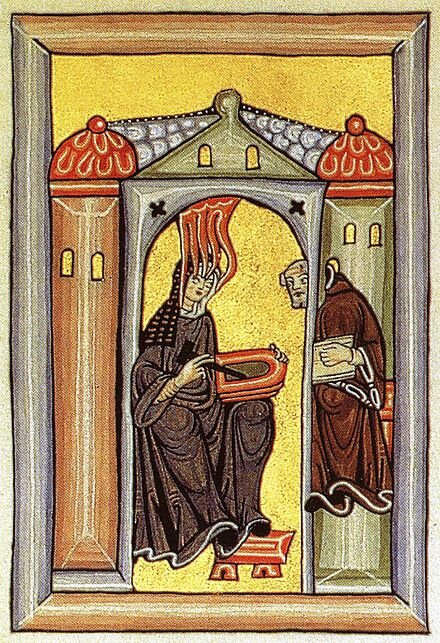Hildegard of Bingen OSB (German: Hildegard von Bingen; Latin: Hildegardis Bingensis; 1098 – 17 September 1179), also known as Saint Hildegard and the Sibyl of the Rhine, was a German Benedictine abbess, writer, composer, philosopher, Christian mystic, visionary, and polymath.[1][2] She is one of the best-known composers of sacred monophony, as well as the most-recorded in modern history.[3] She has been considered by many in Europe to be the founder of scientific natural history in Germany.[4]
Hildegard's fellow nuns elected her as magistra in 1136; she founded the monasteries of Rupertsberg in 1150 and Eibingen in 1165. She wrote theological, botanical, and medicinal texts, as well as letters, liturgical songs,[2] and poems, while supervising miniature illuminations in the Rupertsberg manuscript of her first work, Scivias.[5] There are more surviving chants by Hildegard than by any other composer from the entire Middle Ages, and she is one of the few known composers to have written both the music and the words.[6] One of her works, the Ordo Virtutum, is an early example of liturgical drama and arguably the oldest surviving morality play.[7] She is also noted for the invention of a constructed language known as Lingua Ignota.
Hildegard of Bingen (German: Hildegard von Bingen; Latin: Hildegardis Bingensis; 1098 - 17 September 1179), also known as Saint Hildegard and the , was a German Benedictine abbess, writer, composer, philosopher, Christian mystic, visionary, and polymath. She is one of the best-known composers of sacred monophony, as well as the most-recorded in modern history.
